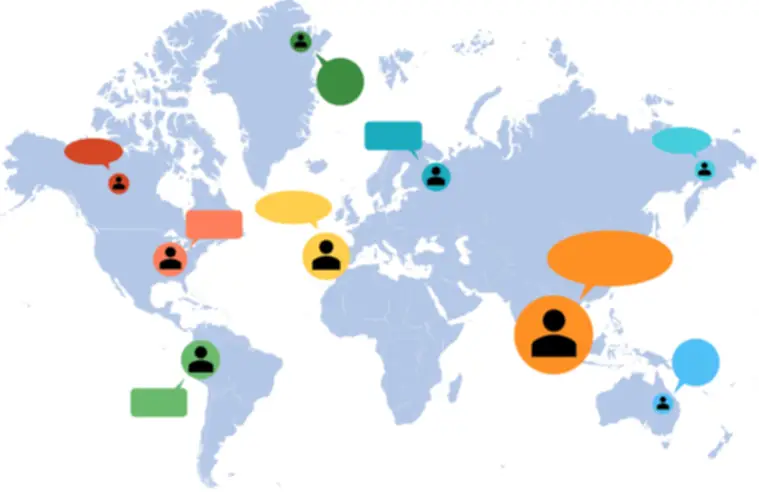Devops Staff Buildings The Devops Engineer’s Handbook
When you view a stream-aligned group, they don’t have any important dependencies on some other group. This doesn’t imply placing people collectively if they may often share info. It’s easy to create a group with all of the wanted expertise by hiring many people, however the group won’t have resilience as each https://fashion-store.org/step-up-your-style-game-with-statement-jackets/ member handles a small, isolated space. A professional manager’s job is to build a group with a strong mixture of skills with overlap whereas preserving the team as small as attainable. You can use DevOps PATHS to detect frequent unintentional team structures to repair and keep away from long-term problems.
Key Practices For Structuring A Devops Group
The evangelist removes silos between totally different teams, brings them onto a typical platform, determines the roles and duties of DevOps members, and ensures everyone is educated on the job they are assigned. DevOps team construction performs a crucial function in fully leveraging DevOps advantages, the place DevOps roles encompass a variety of critical functions inside modern software program growth and IT operations teams. As such, organizations ought to ensure that the group is constructed with the right individuals with a transparent definition of DevOps roles and duties. When it involves DevOps group structure, there isn’t any one-size-fits-all formulation. Determining how to structure your DevOps team is dependent upon a number of elements such as the number of merchandise, technical leadership, and how your growth and operations groups align their processes.
Create A Staff For Each Distinct Product Or Function Group
DevOps came to remodel this, advocating for shut collaboration and constant communication between these departments throughout the complete software development life cycle. This increases the visibility and ownership of each staff member whereas also building an area the place every stage may be supervised and improved to ship better outcomes. Originally, the software creation course of was divided between the event and operations groups, that means that one needed to take on the work the other had finished.
Shorter Development Cycles, Sooner Innovation
A DevOps team thrives on steady improvement, which is achieved by way of regular suggestions loops. These loops permit the staff to rapidly identify and handle issues, refine processes, and enhance performance. Practices corresponding to common retrospectives, automated testing, and monitoring allow the team to gather useful insights and iterate rapidly. This principle ensures that the staff continually evolves and adapts to altering requirements and challenges, fostering a tradition of agility and resilience.

Why Would You Use Several Sorts Of Devops Group Structures?

This may help SRE groups particularly as error budgets may be judged at a glance. One of probably the most significant components to DevOps success is fostering a culture of teamwork and collaboration within your teams. Companies could leap at the alternative to hire new software program engineers when filling out a new DevOps staff – but you should correctly think about how you’re integrating current staff into this team. Nearly half of all organizations who have adopted DevOps imagine that it reduces their time to market, according to analysis by Atlassian.
Devops Roles: Safety And Compliance Engineer
- These practices embrace integrating a CI/CD pipeline, Microservices, and a Serverless strategy, constructing Infrastructure as Code, and Container Orchestration.
- Structuring a DevOps group effectively requires the adoption of key practices that promote collaboration, automation, and continuous enchancment.
- This group structure is dependent on functions that run in a public cloud, since the IaaS staff creates scalable, virtual services that the development team uses.
- Some show to be viable, others simply don’t bring the results we count on.
The idea is that this staff has no separation between development and operations. Understanding and formulating a transparent hiring plan stands as one of the best practices in DevOps Team Management because it ensures that you just find the proper people with the required skills on your staff. When you hire the proper individuals, they can collaborate effectively, be more productive, and contribute to the scalability of your tasks. This fundamentally changes the staff dynamics in a means that previously occurred by coincidence, if it occurred in any respect. Instead of having highly specialised team members, you want well-rounded and skilled generalists. This method makes it inconceivable for there to be a wall between Developers and Operations, as a result of “DevOps” is now a half of the definition of full code.
This situation is unfair to them and will quickly create friction between the two product groups. Give your engineers the privilege of having the ability to focus and dig deep into their work. You want sufficient builders and operations folks to fill in the positions of every product team.

Because these databases are so very important for the business, a dedicated DBA group, typically underneath the Ops umbrella, is responsible for their maintenance, performance tuning and disaster recovery. The downside is when this team turns into a gate keeper for any and each database change, successfully changing into an obstacle to small and frequent deployments (a core tenet of DevOps and Continuous Delivery). DevOps turns into just a rebranding of the role beforehand generally recognized as SysAdmin, with no actual cultural/organizational change happening. This anti-type is turning into increasingly widespread as unscrupulous recruiters bounce on the bandwagon looking for candidates with automation and tooling skills. Unfortunately, it’s the human communication skills that may make DevOps thrive in an organization. Building a culture of collaboration and steady enchancment is essential.
The key right here is to ensure quick and effective collaboration between Dev- and Ops-teams. Depending on your needs, you’ll have the ability to swap between using only one specialized team or utilizing two groups collectively. This strategy additionally accommodates having several separate Dev-teams that may work in parallel on partially unbiased products.
However, simply adding new instruments or designating a staff as DevOps isn’t enough to fully notice the advantages of DevOps. Naturally, once you get your DevOps staff going you’ll wish to monitor their effectiveness and the easiest way of doing it is by taking a glance at KPIs, key efficiency indicators. These may give you ideas on tips on how to make processes run smoother and take away friction from inside the staff. Your colleagues must adapt to the new situation and discover ways to communicate and get a simple means to offer updates and focus on progress. There’s a broad selection of instruments obtainable and you need to do lots of research beforehand. I discussed this in my other article about creating a wholesome DevOps toolchain.

Dev groups proceed to do their work, with DevOps specialists within the dev group answerable for metrics, monitoring, and communicating with the ops group. A devoted team within the Development (Dev) department, which can operate as a digital group, is the operational experience focus. This group possesses information in areas corresponding to operational options, metrics, monitoring, and server provisioning.
For the higher safety and compliance of our apps/environments we need a person that oversees this space. This position works carefully with the IT Ops staff to plan one of the best method for the apps/services. The Security engineer must work with both internal and external teams to ensure apps/systems are securely integrated, configured, managed, and supported in manufacturing. Start on the group degree, hire and manage the proper expertise required for the group.
DevOps architecture plan includes defining processes, instruments, and workflows that allow environment friendly software improvement, testing, deployment, and monitoring. Below is a detailed DevOps structure plan that covers every stage of the software growth lifecycle. Developers in a DevOps team play a vital function past writing and sustaining code. They work carefully with DevOps Engineers to combine their code into the CI/CD pipeline, making certain easy and steady delivery. Developers are additionally concerned in automated testing and monitoring, contributing to a quicker and more reliable launch cycle. Their collaboration with other team members helps in identifying and resolving issues early within the development course of.


